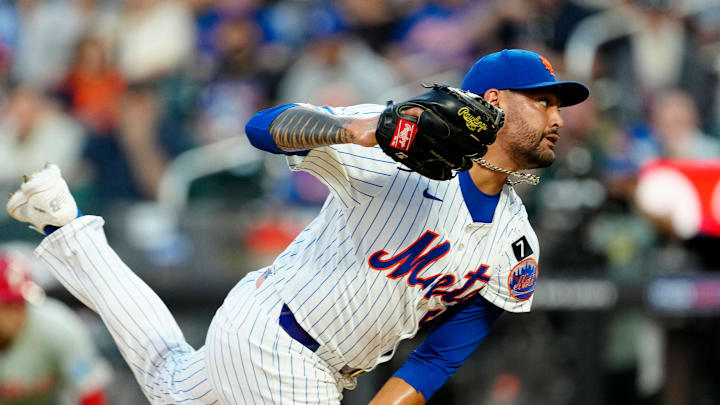The 2025 New York Mets season has been a tale of two halves, and unfortunately for fans, the second half has been a struggle. After a promising start, the starting rotation has faltered, contributing to the team's slide. Expectations for some of the veteran pitchers who were supposed to anchor the staff have been largely unfulfilled, leaving the Mets to increasingly lean on their younger, less experienced arms. Injuries to key starters, including Sean Manaea for the first half of the season, have compounded the issue and put a significant strain on the bullpen.
While the team has been fighting to hold on to a playoff spot, the inconsistent performance of the pitching staff has been a major concern. Kodai Senga, for example, has struggled to find his form since returning from injury, and Frankie Montas was moved to the bullpen before a season-ending injury. Amidst this pitching turmoil, Sean Manaea's 2025 season, which was delayed by a right oblique strain, has been a disappointment to many, with a high ERA. After a stellar 2024 campaign, hopes were high for his return. Yet, his performance thus far has been underwhelming, and it's easy to dismiss his potential impact for the remainder of the year. However, a closer look at the advanced metrics tells a more nuanced story.
Sean Manaea's potential for a comeback
Although Manaea’s ERA stands at a high level, there is a strong case to be made that he has been the victim of some bad luck. His xERA, a Statcast metric that estimates a pitcher's ERA based on the quality of contact allowed (exit velocity and launch angle), sits at a much more encouraging level. This significant difference of over a full run between his actual ERA and his xERA suggests that he has been hurt by factors beyond his control, such as a high BABIP (.325) or a less-than-stellar defense behind him, rather than consistently poor pitching itself.
Furthermore, his FIP sits at a respectable under 3.50, and his K/9 rate is an impressive level at almost 12.00, which indicates that he is still striking out a high number of batters. His GB% is around 40.0%, an improvement over his 2024 season, hinting at better control over batted balls. Looking at his pitching distribution, Manaea primarily relies on his four-seam fastball (around 45% usage) and his slider (around 25% usage). While his fastball has generated a higher xBA and xSLG, other pitches in his arsenal show more promise. His changeup, despite lower usage, boasts a much better xBA and xSLG, demonstrating its effectiveness when deployed. Similarly, his sweeper has also shown good underlying metrics. This disparity highlights a potential area for adjustment.
The true signs of optimism for Manaea are evident in these underlying Statcast metrics. To become more efficient and truly turn his season around, Manaea could benefit from a more strategic deployment of his sweeper and changeup. A greater mix of these off-speed pitches would create more deception for hitters, making his fastball less predictable and more effective when he does throw it.
The high strikeout rate, improved groundball percentage, and especially the favorable xERA compared to his actual ERA, all suggest that the underlying "stuff" is still there. With a few tweaks to his pitch sequencing and a little more luck, Manaea has the potential to be the reliable veteran arm the Mets desperately need. His ability to go deeper into games as his stamina improves will be crucial for a taxed bullpen and could be the key to the Mets making a late-season push.
